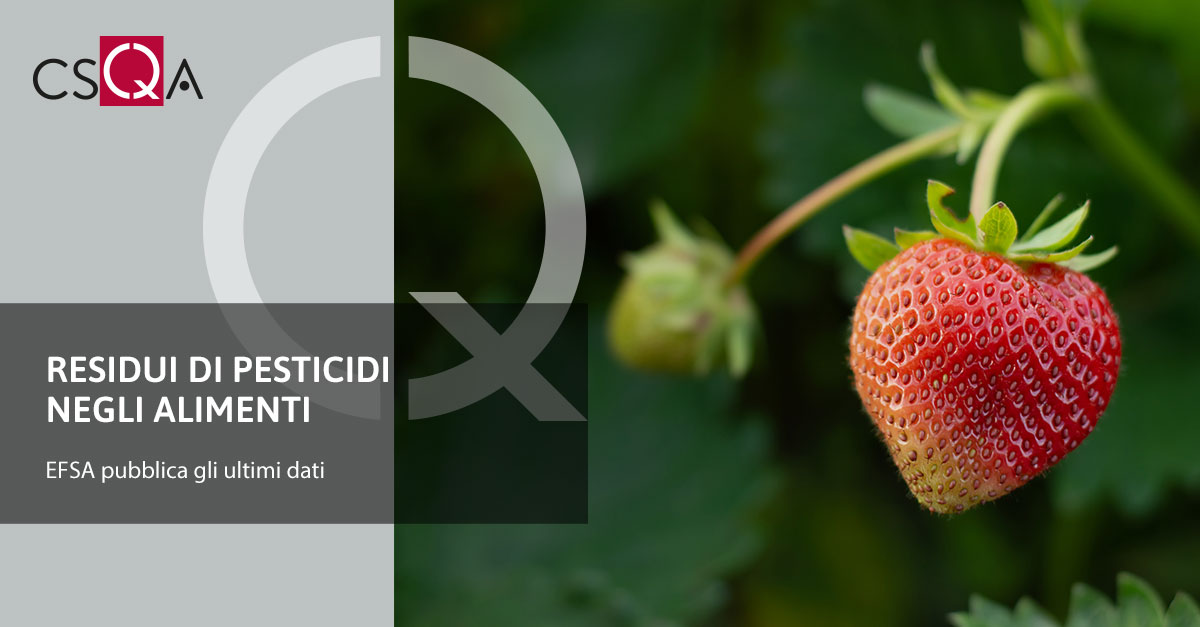 The latest EFSA report on pesticide residues in food in the European Union has been published, a cross-section of the residue levels found in a basket of consumer products.
The latest EFSA report on pesticide residues in food in the European Union has been published, a cross-section of the residue levels found in a basket of consumer products.A large number of samples analyzed
An unprecedented 110 829 food samples were collected in the European Union (EU) in 2022, a quarter more than in 2021. 96.3% of them were within the legal limits .As for the subset of 11 727 samples analyzed on the basis of the specific control program coordinated by the EU (EU MACP), 98.4% of them were found to be within the legal limits.
Results of the EU coordinated programme
The EU MACP program analyzes randomly sampled samples of 12 food products. For 2022 these were apples, strawberries, peaches, wine (red and white), lettuces, head cabbage, tomatoes, spinach, oat grains, barley grains, cow's milk and pork fat.Of the samples analyzed within the coordinated program:
- 6 023, or 51.4%, were found to be free of quantifiable residues;
- 5 512, or 47%, contained one or more residues in concentrations below or equal to permitted limits (known as maximum residue levels or MRLs);
- 192 or 1.6% contained residues exceeding the permitted limits.
Residue trends in the 12 foods analyzed
A basket of similar products is used on a three-year rotation basis , so as to be able to identify increasing or decreasing trends for specific products.The overall MRL breach rate for pesticide residues increased from 2% in 2019 to 1.6% in 2022.
Compared to 2019 and 2016, the overrun rate decreased for apples, peaches, strawberries, wine and pork fat; for spinach it has dropped since 2019. In 2022, no samples of cow's milk with MRLs above the legal limits were found, as happened in 2019 and 2016. The exceedances increased for head cabbages, tomatoes, lettuces, barley and oats in grains.
Detailed findings from all control programs are available on the EFSA website via a interactive data visualization page which is refined year by year in order to make the data more accessible to the non-specialist public.
In addition to the harmonized and comparable data collected under the aforementioned EU programme, EFSA's annual report also uses data from the national control activities of individual EU Member States[1] as well as from Norway and Iceland.
National control programs are risk-based and provide important information to risk managers, but do not give a statistically representative picture of residue levels in foods on the market in the European Union.
Food risk assessment
The results of monitoring programs are a valuable source of information for estimating the dietary exposure of European consumers to pesticide residues.As part of the analysis of the results, EFSA also carried out a food risk assessment.
This year the report extends the probabilistic assessment methodology introduced last year to all pesticides analyzed under the EU-coordinated programme . This assessment indicates the likelihood that consumers are exposed to a quantity of residues above a certain safety threshold.
Based on its assessment, EFSA concludes that the risk to consumer health from the estimated exposure to pesticide residues in the foods analyzed is low.
However, the report makes a series of recommendations to increase the efficiency of European pesticide residue control systems.
[1]: In accordance with the Agreement on the withdrawal of the United Kingdom of Great Britain and Northern Ireland from the European Union and the European Atomic Energy Community, in particular Article 5(4) of the Windsor Framework (see Joint Declaration No 1/2023 of the Union and the United Kingdom in the Joint Committee established by the Agreement on the withdrawal of the United Kingdom of Great Britain and Northern Ireland from the European Union and the European Atomic Energy Community of 24 March 2023, OJ L 102, 17.4.2023, p. 87), in conjunction with Annex 2, section 24, of that Framework, for the purposes of this Regulation references to Member States shall also be deemed to be made to the United Kingdom of Northern Ireland.
(Source: https://www.efsa.europa.eu/ )